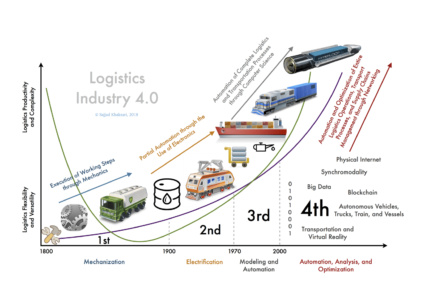
In a previous post, we presented the vision of the efficient warehouse and how to use discrete event simulation (Digital Twin) to support decision-making relevant to the design and operation of said warehouse. It remained for this post to describe other analytical techniques that would offer us concrete answers to specific questions in specific situations.
Predictive analytics
In the first place, analytics allows to predict the demand that the warehouse will have to satisfy in the most immediate time horizon. This is achieved by identifying patterns and correlations hidden in the available data, going far beyond the obvious and unearthing complex cases, such as multi-year, annual, quarterly, monthly, weekly seasonality, correlation with meteorology, price of external elements (fuel, electricity), etc. This information is essential in order to provide the system with the necessary resources for the operation. Knowing the future allows us to prepare for it.
Predictive analytics also makes it possible to estimate risks of non-compliance with delivery commitments based on relevant system variables (inventory level, type of transport, period of the year, etc.). In general, you can characterize, and even sometimes explain, the values of certain warehouse operation KPIs based on other relevant variables.
Prescriptive analytics
But analytics does not stop here. Based on the forecast demand, the analytics allows to identify the amount of resources needed in each of the areas and, even more, to assign and manage these resources in the most appropriate way to the objective pursued: eg. Assign shifts to each of the workers so that the service is attended at the lowest possible cost. Analytics helps bridge the gap between insight and decision.
However, most efforts have been devoted to developing descriptive analytics, as this 2018 work suggests. The proportion may have changed since then, but the data shows that there is a lot of room for the application of prescriptive analytics to warehouse management.

Wherever there is a complex decision to make, prescriptive analytics is useful and warehouses are no exception. But what use cases can we pinpoint in which prescriptive analytics can provide notable improvements?
Use cases
Picking is one of the most relevant activities in a warehouse, which determine the profitability of the operation. Here we could settle for implementing simple but inefficient rules, such as going through all the aisles in a serpentine fashion until all the items are picked up.

But there are much more efficient alternatives, such as calculating the routes so that their total distance is as short as possible. Multiple techniques can be applied and, in particular, all those related to TSP. These two examples present two case studies with improvements of 44% and 16.2%, respectively.
The results offered by a prescriptive analytics algorithm can (and should) be verified before putting them into practice and this is simpler and less risky by using a digital twin in the system, as we explained in this post. This other work is a good example of this combination of techniques.
What we are commenting on is also applicable when we are operating in an AGV context and we want to optimize its use by minimizing routes, avoiding congestion or optimally allocating storage.

The problem of managing a warehouse is closely related to other processes. For example, a finished product warehouse must be prepared to receive the output from the production lines. In the event that storage space is relatively tight for productive capacity, storage can be problematic. Indeed, when it comes time to store the finished product there is no possibility of arranging the items in an orderly manner. In turn, this can result in unnecessarily high time used on just locating the product during the preparation of the shipment.
The analytics can be useful to correctly dimension the warehouse in the medium term. In the short term, it may be interesting to use prescriptive analytical models to coordinate production with warehouse management and delivery times. In other words, it is possible to incorporate the storage of the finished product into the production planning, along with the rest of the requirements, in order to guarantee an efficient preparation process that does not compromise delivery to the end customer.
When response times are very demanding, the conventional approach can lead to too long run times, which deserves special attention.
Which gives us two options. The least sophisticated is to identify simple rules of rapid application that can be implemented in the required times. Development effort is relatively low but, in turn, the result is far from optimal.
Alternatively, Reinforcement Learning can be of great help. In essence, RL consists of the training of an agent that becomes capable of proposing at all times, and given the state of the warehouse, the next best action.
The training involves creating a staging environment (again, a digital twin) where the operation of the warehouse is reproduced and the agent autonomously explores actions based on status (pending orders, locations of references, location of pickers, etc.). The agent identifies which actions lead to the best overall situation; For this, it sometimes executes exploratory actions to assess how interesting they may be and other times it executes actions that have returned good results previously in order to confirm that this remains the case. Like an elite chess player anticipating her opponent’s possible moves and taking into account the long-term effect of her moves.
The result is a trained offline agent that is prepared to react with great immediacy to any possible system state.
In short, the space for prescriptive analytics (and, hand in hand, predictive) is enormous and there is a wide range of options to guarantee the effectiveness, efficiency and profitability of developing a tool for the optimization of warehouse management. What is not profitable is to continue with “naive” methods, apparently cheap, but that miss out on savings opportunities with each poor choice they propose.



